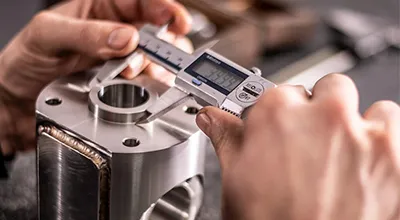The valve industry, as a crucial part of the engineering sector, plays a pivotal role in regulating the flow of fluids in various industrial processes. As industries continue to evolve and new technological advancements emerge, the future of the valve industry holds great promise.

The valve market has been steadily growing in recent years. With the global industrialization drive, especially in emerging economies, the demand for valves across multiple sectors such as oil and gas, power generation, water treatment, and chemical industries has surged. For instance, in the oil and gas industry, valves are used in pipelines, refineries, and offshore platforms to control the flow of crude oil, natural gas, and refined products. The power generation sector, including both traditional thermal power plants and the burgeoning renewable energy facilities like wind and solar farms, requires valves for efficient fluid control in cooling systems, steam turbines, and water management.
According to market research, the global valve market size has reached a significant value and is expected to grow at a compound annual growth rate (CAGR) of around 10% in the coming years. The Asia-Pacific region, in particular, is emerging as a major growth hub due to rapid industrialization, infrastructure development, and urbanization. Countries like China and India are witnessing substantial investments in sectors that rely heavily on valves, driving the regional and global market growth.
A. Technological Advancements
Smart and Intelligent Valves: The integration of Internet of Things (IoT) technology into valves is a game - changer. Smart valves can be remotely monitored and controlled, providing real - time data on flow rates, pressure, and temperature. This not only enhances operational efficiency but also enables predictive maintenance, reducing downtime and maintenance costs. For example, in a large - scale water treatment plant, smart valves can adjust the flow of water based on real - time demand, optimizing energy consumption and ensuring a consistent supply of treated water.
Advanced Materials: The development and use of new materials are enhancing the performance of valves. Materials that are more corrosion - resistant, heat - resistant, and durable are being adopted. In the chemical industry, where valves are exposed to highly corrosive substances, the use of advanced alloys and polymers can significantly extend the lifespan of valves, reducing the frequency of replacements and improving overall process reliability.
B. Industry - Specific Demands
Renewable Energy: The push towards a low - carbon future has led to a boom in the renewable energy sector. In wind farms, valves are used in hydraulic systems for blade pitch control and in cooling systems for generators. In solar thermal power plants, valves are crucial for controlling the flow of heat - transfer fluids. As the share of renewable energy in the global energy mix continues to grow, the demand for specialized valves in this sector will increase exponentially.
Water and Wastewater Treatment: With the growing global population and increasing concerns about water scarcity and environmental protection, the water and wastewater treatment industry is expanding. Valves are essential for controlling the flow of water in treatment processes, from intake to distribution and from wastewater collection to treatment and disposal. The need for efficient, reliable, and environmentally friendly valves in this sector is on the rise.
Despite the promising prospects, the valve industry also faces some challenges. One of the major challenges is intense competition, both from established players and new entrants. This has led to price pressures, especially in the lower - end of the market. Another challenge is meeting the stringent regulatory requirements, particularly in terms of environmental and safety standards.
To overcome these challenges, valve manufacturers are focusing on innovation. By investing in research and development, companies can develop high - quality, differentiated products that can command higher prices. For example, developing valves with lower emissions or higher energy - efficiency can help companies meet regulatory requirements while also appealing to environmentally conscious customers. Additionally, strategic partnerships and mergers can help companies expand their market reach and gain access to new technologies and resources.
Aohoy – Your Trusted Sanitary Fluid Solutions Provider. As a leading fluid equipment manufacturer, Aohoy offers high-quality sanitary valves, pumps, and fluid fittings designed for strict hygienic standards. Contact us today for expert guidance on optimizing your fluid systems!